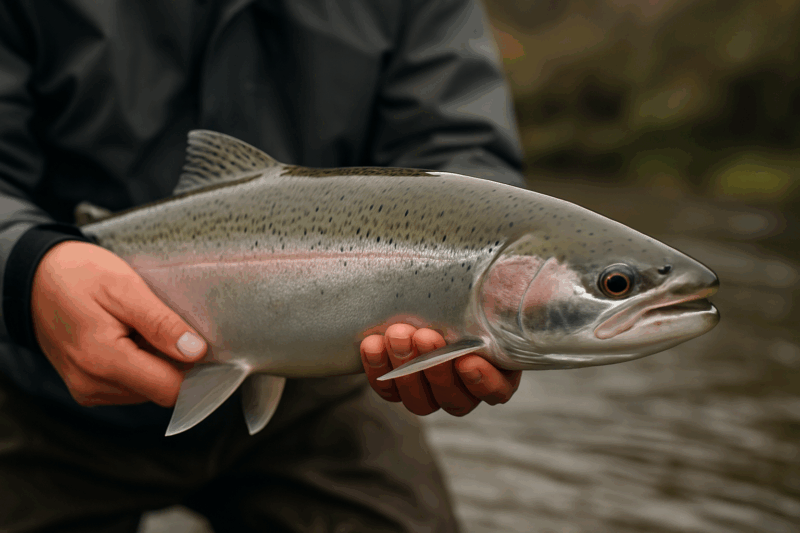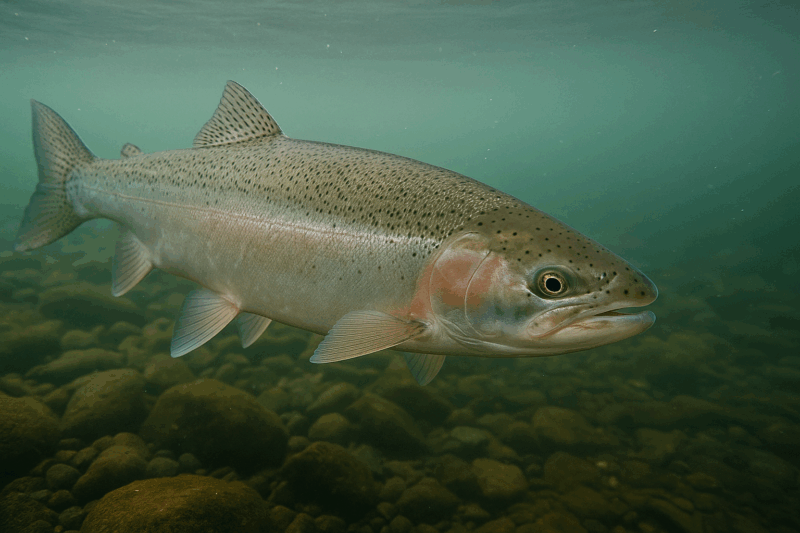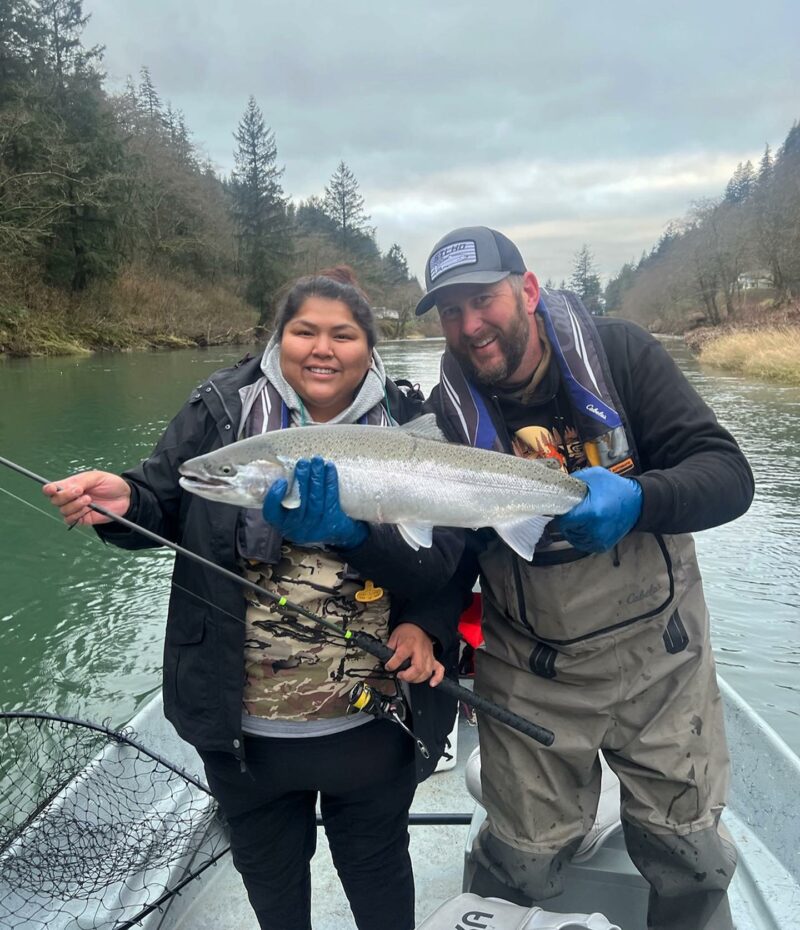A First-Timer’s Guide to Winter Steelhead Fishing
If you’ve ever heard anglers whisper about winter steelhead as “ghosts,” you may have wondered why these fish are spoken of with such reverence. In Oregon, where icy rivers cut through green valleys and snow-dusted forests, winter steelhead inspire an almost mythical respect. They are elusive, powerful, and unpredictable, appearing in swollen rivers during the harshest months of the year. Hooking one isn’t just fishing—it’s an initiation into a tradition that countless anglers dream of but only the persistent truly experience.
The Legend of the Winter Ghost
Winter steelhead earn their ghostly reputation through their habits and the conditions in which they’re pursued. They slip upriver with storm pulses, appearing in green, rising waters after winter rains. One day a tributary may seem lifeless, the next it carries chrome-bright fish fresh from the ocean. Their presence is fleeting, their strikes sudden and violent.
Fishing for winter steelhead also demands that you face the elements. Icy mornings, rain-soaked gear, and fog rolling off the Columbia River valleys are all part of the hunt. Yet this challenge is what makes the reward so powerful. When a steelhead finally smashes your bait or jig, its strength is unmatched. These fish leap, run, and test every knot and ounce of patience. For many, the first time a steelhead rips line from their reel is the moment they understand why the fish are legendary.

Understanding the Fish
So what makes a winter steelhead different from its cousins? Summer steelhead enter rivers months earlier, often in leaner water, and hold until they’re ready to spawn. Winter steelhead, by contrast, migrate during high, cold flows between December and March, often spawning soon after arrival. They’re heavier, thicker-bodied, and fueled by years of feeding in the Pacific Ocean.
Don’t mistake them for a resident rainbow trout. Though all three are technically the same species, a winter steelhead returning from saltwater is a creature transformed. Instead of a modest rainbow, you’re facing a chrome torpedo that often stretches 8 to 12 pounds, with some tipping scales beyond 20. Their ocean-honed muscle and unpredictable fight set them apart from anything else in freshwater fishing.
Timing Your Hunt
In Oregon’s Columbia River tributaries, winter steelhead fishing peaks from December through March. Each river has its rhythm. The Clackamas and Sandy often see good pushes of fish after the New Year, while the Hood can hold opportunities deeper into spring. Conditions are everything. When a fresh storm swells a river and then the water begins to drop and clear to a perfect green, anglers know it’s time.
For a first-timer, this window is golden. Local guides track river flows, clarity, and fish movement with years of experience. They know when a river is “in shape” and when it’s better to wait. Timing isn’t just about the calendar; it’s about reading water and weather.

Effective First-Timer Tactics
If you’ve never held a steelhead rod before, don’t worry. The best Oregon winter steelhead guides tailor techniques so beginners can get in on the action.
One of the most common methods is side-drifting bait from a drift boat. The current carries your presentation naturally, putting it right in the path of traveling fish. Another highly effective approach is float fishing with a jig or bead beneath a bobber. You watch that bobber intently, and when it drops, you set the hook into pure adrenaline.
There’s also bobber-dogging, a variation where the rig ticks along the bottom under a float, and in certain waters, traditional drift fishing remains a staple. The beauty of a guided trip is that you’ll have someone at your side adjusting tackle, positioning the boat, and teaching you how to recognize that subtle steelhead take.
What to Expect on the Water
A winter trip is not a sunny summer float. Expect cold hands, mist on the river, and the steady sound of rain on your hood. Rivers run higher and stronger, tinted a rich green from mountain runoff. It’s not easy, but that’s the point.
Success with winter steelhead requires patience. You might fish for hours before feeling that unmistakable pull. But every cast holds the possibility of connecting with one of the most revered sportfish in the Northwest. The journey itself—floating past moss-draped cliffs, watching bald eagles overhead, sharing coffee on a frosty morning—is part of the reward.
Taking on the Challenge
Winter steelhead fishing in Oregon isn’t just another day on the river. It’s stepping into a tradition built on grit, respect, and unforgettable adrenaline. For a first-time steelheader, there may be no better way to begin than alongside an experienced guide who provides the gear, safety, and expertise to tilt the odds in your favor.
Catching a winter steelhead is never guaranteed. That’s what makes it so meaningful when it happens. The ghost reveals itself only to those willing to brave the cold, put in the time, and believe in the moment.

